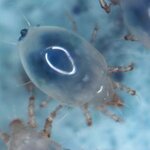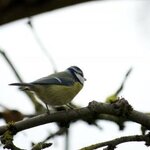Evolution

Some assume that evolution only occurs gradually, over hundreds or thousands of years, but scientists have shown otherwise numerous times and now a new paper in Ecology Letters affirms that environmental change can drive hard-wired evolutionary changes in animal species in a matter of generations.
Researchers found significant genetically transmitted changes in laboratory populations of soil mites in just 15 generations leading to a doubling of the age at which the mites reached adulthood and large changes in population size. The results demonstrate that evolution can be a…

At some point everyone has heard the question: "Which came first, the chicken or the egg.". What is surprising about this question is that it can still produce any debate.
It is surprisingly obvious yet one wonders what has contributed to its longevity and its countinued appearance in various arguments.
Why obvious? Well, let's consider the premises. Unless one is predisposed to believing that animals simply appear, then we must reject the premise that a chicken can exist as a fully formed adult without any previous existence. As a result, the only element left to…

Male and female blue tits look a lot alike to us but in the UV-range, visible to birds, the male is much more colorful.
They see another thing we don't perceive so easily; the monogamous mating system of these birds is not what it seems. In every second nest there are chicks that are not related to the care-giving father. An already mated male can increase the number of his offspring by siring extra-pair offspring in other nests than the one he cares for with his mate. Emmi Schlicht and Bart Kempenaers of the Max Planck Institute for Ornithology in Seewiesen investigated whether this could…

The term 'living fossil' is a topic for argument among scientists because it appears to suggest that some organisms have stopped evolving. Like 'missing link' or 'God particle' the concern is the colloquial meaning has overtaken the science one.
Charles Darwin informally introduced the term 'living fossil' in On the Origin of Species when talking about the platypus and lungfish, groups that appear to have diversified little and appear not to have changed over millions of years. For him living fossils were odd remnants of formerly more diverse groups, and suggestive of a connection between…

In October 1908, after several false starts, one of the world's most effective predators finally found a niche where its population could begin to boom. A century later, this ruthless hunter has spread throughout the world and is known to prey upon everything from insects to grizzly bears, although it does occasionally lose when attacking the latter. Among its prime targets are birds, of which it is estimated to kill nearly 100 million every year in the United States alone1. I refer, of course, to the automobile.The number of birds killed by automobiles, often referred to as…

A team of scientists has uncovered how some sea snakes have developed 'shrunken heads' - literally smaller physical features than their related species.
A large head would seem to be a welcome trait for sea snakes, which typically have to swallow large spiny fish. However, there are some circumstances where it wouldn't be very useful: sea snakes that feed by probing their front ends into narrow, sand eel burrows have evolved comically small heads.
A new paper has shown normal-shaped sea snakes can evolve such "shrunken heads" very rapidly. This process can rapidly lead to speciation (…

Who says you can't go home again? Not evolutionary biology. Well, sort of. There is a supposition with the proper name of "Dollo's law" which states that evolution is unidirectional and irreversible and once an organism has evolved specialized traits, it can't return to the lifestyle of its ancestors. It hasn't really caught on.
A new study punctures that idea a little more. A research team has used a large-scale genetic study of the lowly house dust mite to uncover an example of reversible evolution that violates this supposed law. The research shows that tiny free-living house dust…

The divergent lineage of the oldest known genetic branch of the human Y chromosome, the hereditary factor determining male sex, has been pushed back in time.
The new divergent lineage, found in an individual who submitted his DNA to Family Tree DNA, a company specializing in DNA analysis to trace family roots, branched from the Y chromosome tree before the first appearance of anatomically modern humans in the fossil record.
Unlike the other human chromosomes, the majority of the Y chromosome does not exchange genetic material with other chromosomes, which makes it simpler to trace…

A new paper says that flocks of birds, schools of fish, and groups of any other living organisms might have a mathematical function in common - body sizes are distributed according to the same mathematical expression, where the only unknown is the average size of the species in an ecosystem.
Several observations in the study suggest to them that the size distribution function could be universal. The observations were made in the lab using 14 species of aquatic microorganisms, including unicellular and multicellular ones that are very distant from an evolutionary point of view.
The…

Researchers usingt the Green Bank Telescope (GBT) in West Virginia say they have discovered an important pair of prebiotic molecules in interstellar space. The discoveries indicate that some basic chemicals that are key steps on the way to life may have formed on dusty ice grains floating between the stars.
They studied a giant cloud of gas 25,000 light-years from Earth, near the center of our Milky Way Galaxy. The chemicals they found in that cloud include a molecule thought to be a precursor to a key component of DNA and another that may have a role in the formation of the amino acid…